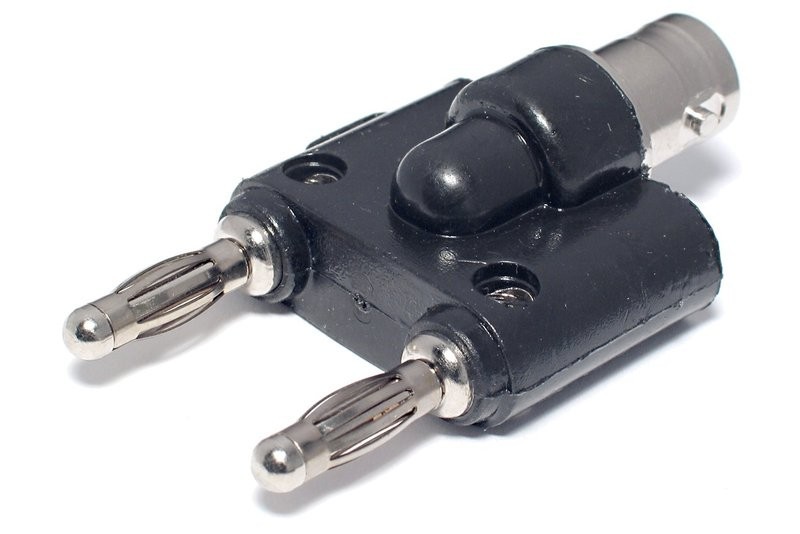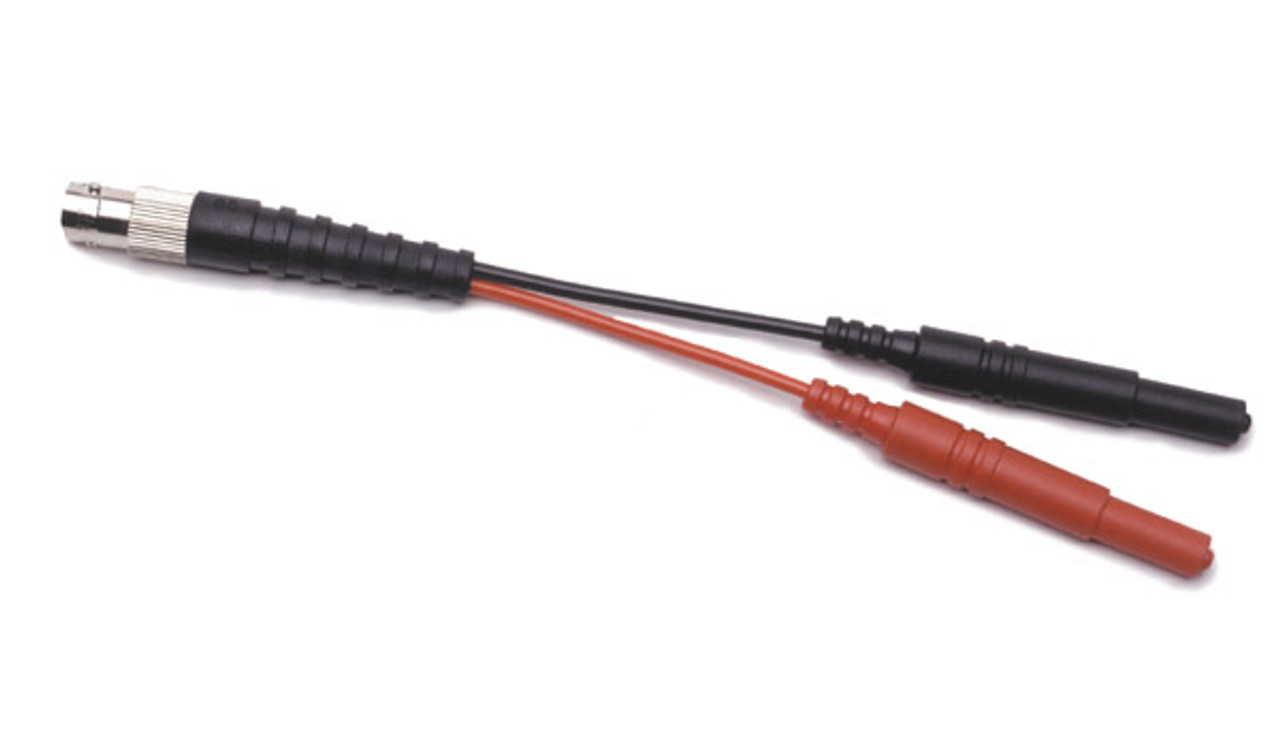
The other end of the plug has a lug connector to which a length of flexible insulated equipment wire can be attached, which is either screwed, soldered, or crimped into place. When inserted into a matching 4 mm socket, the springs press against the sides of the socket, improving the electrical contact and preventing the pin from falling out. Taking the springs into account, the actual diameter of a banana plug is typically a bit larger than 4 mm when not plugged in. The pin has one or more lengthwise springs that bulge outwards slightly, giving the appearance of a banana. The pin's diameter is nominally 4 millimetres ( 5⁄ 32 in). Other lengths between 11 millimetres ( 3⁄ 8 in) and 25 millimetres (1 in) are less common. However, other sizes have emerged, such as 15 millimetres ( 5⁄ 8 in) pins, which can commonly be found in the US. This pin length is still common in Europe and other parts of the world. The original plug consists of a cylindrical metal pin about 20 millimetres ( 3⁄ 4 in) long. ĭesign Banana plugs with the curved spring visible Various banana plug (type 274) products are shown in a September 1928 catalog and prices were listed in a July 1928 newsletter. The General Radio Company claims it introduced the banana plug in the United States in 1924.Not needing a small screw to hold the wire in place, like in conventional Bananensteckern (banana plugs), is presented as an advantage of the invention. The patent describes a banana plug that consists of two parts only.


In 1929 Richard Hirschmann was granted a patent in Germany for an improved banana plug.

The Hirschmann company claims it was invented by Richard Hirschmann in 1924.Invention of the plug is claimed by two entities:
#Bnc banana plug Patch
The plugs are frequently used to terminate patch cords for electronic test equipment such as laboratory power supply units, while sheathed banana plugs are common on multimeter probe leads. Common types include: a solid pin split lengthwise and splayed slightly, a tip of four leaf springs, a cylinder with a single leaf spring on one side, a bundle of stiff wire, a central pin surrounded by a multiple-slit cylinder with a central bulge, or simple sheet spring metal rolled into a nearly complete cylinder. Various styles of banana plug contacts exist, all based on the concept of spring metal applying outward force into the unsprung cylindrical jack to produce a snug fit with good electrical conductivity. The term 4 mm connector is also used, especially in Europe, although not all banana connectors will mate with 4 mm parts, and 2 mm banana connectors exist. Various laboratory-style 4 mm banana plugs Loudspeaker-style banana plugs connected to a loudspeaker Double-stackable banana plugs for junction into two additional parallel circuits.Ī banana connector (commonly banana plug for the male, banana socket or banana jack for the female) is a single- wire (one conductor) electrical connector used for joining wires to equipment.


 0 kommentar(er)
0 kommentar(er)
